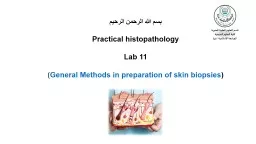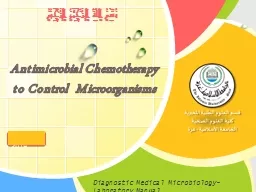PPT-بسم الله الرحمن الرحيم
Author : cheryl-pisano | Published Date : 2020-04-10
Practical histopathology Lab 11 General Methods in preparation of skin biopsies Introduction The skin together with its accessory organs sweat glands
Presentation Embed Code
Download Presentation
Download Presentation The PPT/PDF document " بسم الله الرحمن الرحي..." is the property of its rightful owner. Permission is granted to download and print the materials on this website for personal, non-commercial use only, and to display it on your personal computer provided you do not modify the materials and that you retain all copyright notices contained in the materials. By downloading content from our website, you accept the terms of this agreement.
بسم الله الرحمن الرحيم : Transcript
Download Rules Of Document
" بسم الله الرحمن الرحيم "The content belongs to its owner. You may download and print it for personal use, without modification, and keep all copyright notices. By downloading, you agree to these terms.
Related Documents














